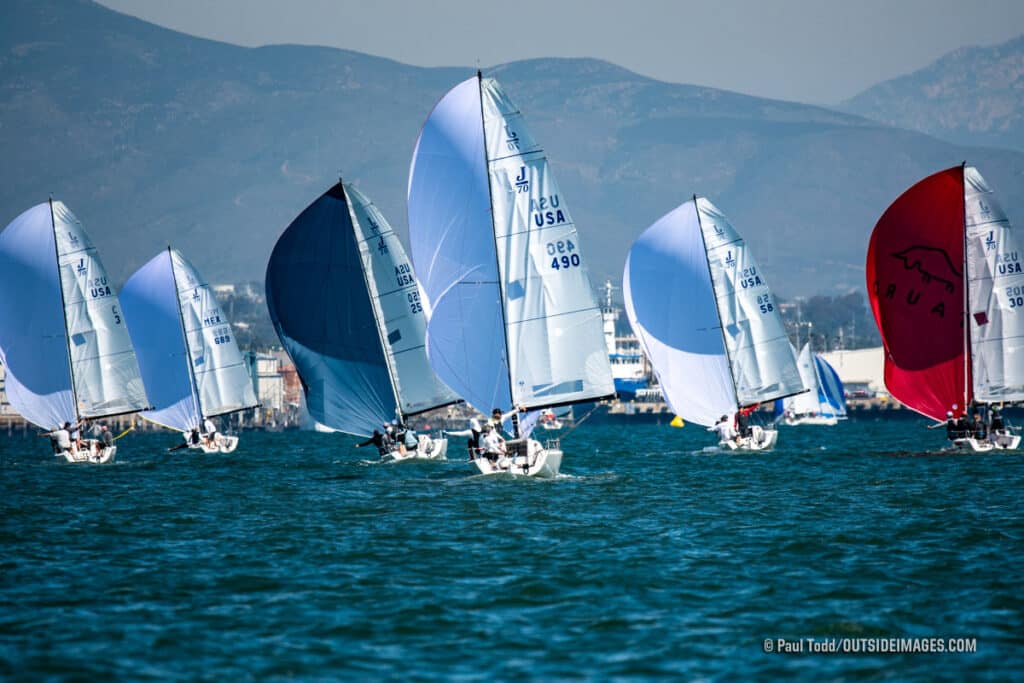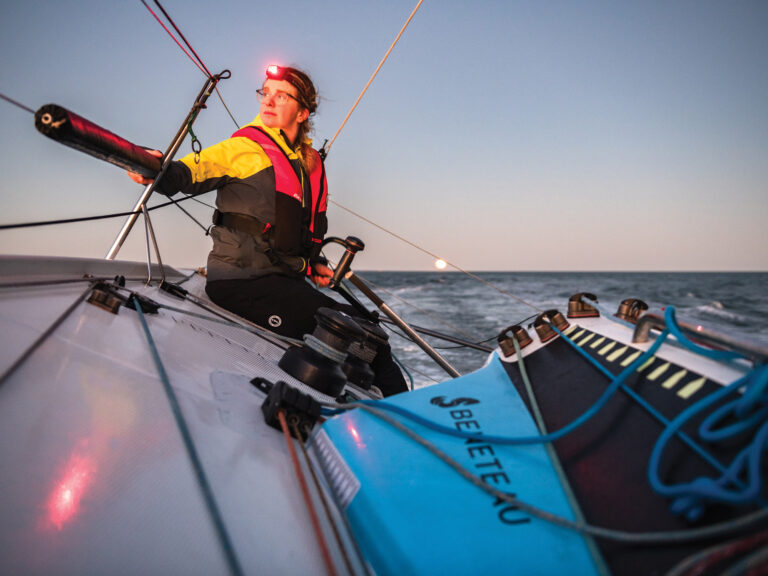
Back when I was racing Sunfish and Force 5s, I absolutely loved reaching legs: the spray in my face, water squirting through the centerboard truck, the thrill of broaching and being on the razor edge of control in big breezes. Even light air reaching was fun because we were suddenly going a whole lot faster than would if sailing dead downwind. But there was more to reaching than speed. It required the special racing skills of maintaining maximum speed while passing (and hopefully not being passed) by other boats.
Alas, the thrill is gone, thanks to the onset of windward-leeward courses, which are designed to give boats that are behind a chance and create greater opportunities for passing. I have a short attention span—perhaps my greatest accomplishment was remaining in a seat for 11 years of college, but when windward/leeward racing started several decades ago, it left me hugely disappointed, and I suddenly found racing boring. Up and down with not much excitement, no speed downwind, and generally, no planning. I even drifted away from the sport in search of speed elsewhere, discovering it in triathlons. Swimming became my upwind, biking aboard a high-performance machine my reach, and running my downwind. An overstatement? Perhaps, but my hyperbole raises the question: why did we adopt the windward/leeward paradigm?
For many years, the Olympic Course (both regular and modified) was the standard in the racing community. This course honored the original three points of sail and tested sailor skill sets on all three legs. As boats got faster, planning and strategizing on the course became more fun. One might argue that it helped the sport grow. In Match Racing, the windward/leeward option makes great sense, and perhaps influenced the decision to move to exclusively windward/leeward courses. But now, decades later, we find the growth of our sport has flatlined. Is there a correlation between this lack of draw for new sailors and the rather slow windward/leeward events?
One goal for the change was to give some advantage to boats behind, a chance to get back into the game, and that has probably worked. Wind shadows and new breeze coming down the course, do favor boats behind. Another goal was to enable more passing. The drumbeat was, “Let’s get rid of the parade!” However, passing is actually very difficult with the wind shadow issues a windward/leeward can create. More on passing later.
A tangential reason is that, while responsibilities and duties of the race committee can be overwhelming as is, having to deal with the jibe mark doesn’t make that any easier. Further, the fleet spreads out over a larger area, perhaps creating liability concerns for the race committee when the wind is up. Certainly, keeping the boats in the confines of a windward/leeward course is easier.
So, back to the parade. Does a run really expand the opportunities to gain or lose, compared to a reach? My gut tells me that reaching legs wins out there, but where’s the data? Having a love for numbers, I set out on a rather unscientific exercise. I watched a group of Laser and 420 races and logged changes in boat position, reaching legs versus downwind legs. From a powerboat, I observed four regattas, two in each type of boat. On the windward/leeward courses, I tracked the top 10 boats around the first windward mark and compared it to their positions at the leeward mark. At regattas with reaches, I again tracked the top 10 boats, noting changes in positions from the windward mark to the jibe mark. My data included six downwind legs and six reaching legs, and included 60 boats between the two classes. Each change of place was awarded 1 point.
Clearly, this is not a scientific study, as it lacks appropriate numbers (this sample size is certainly not big enough) and has little, if any, internal validity (confidence that a cause-and-effect relationship is, in fact, present). But the data does suggest what the research world calls “directionally,” a situation where a correlation is clear but a cause-and-effect relationship is still unclear.
What did I learn? Downwind legs averaged 2.3 boats passed per leg; reaching legs averaged 2.4 boats passed. The unscientific results are essentially equivalent and could display research “directionally.” Clearly, there is some correlation. If the ultimate goal was to move to windward/leeward racing for greater passing, my data suggests it hasn’t.
Sailing is so unique, with its many racing classes and its natural integration into the water environment. We have moved into a world with many young sailors that echo my short attention span and need for a thrill and a splash. Reaching legs revive the origin of sport and lets us enjoy the concept of “fast is fun.” It’s no surprise that grand-prix racing, with its fast catamarans, start and finish races on reach legs. It appears we have moved into windward/leeward courses without full support of data, which is now available to us, but in the end, it boils down to speed.
Please, can we have our reach legs back?









